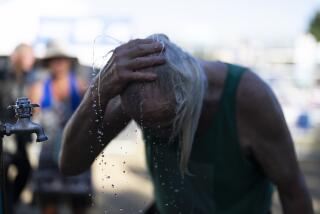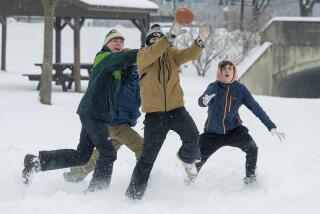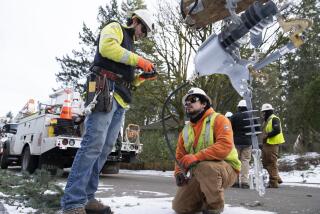Cold Records Fall in West as East Posts Record Highs
A winter storm battered the Pacific Northwest on Saturday as temperatures plunged to record lows in six states across the West.
Wind-chill temperatures, which reflect how wind-driven cold feels to the skin, dropped lower than 60 below zero in at least four cities, including a wind-chill reading of 70 below zero at Pierre, S.D.
“It’s colder than the devil,” said Bill Joseph, owner of the Pepper Mill Cafe in Valentine, Neb., the coldest spot in the state at 20 degrees below zero.
“A lot of people’s cars won’t start today,” he said. “Some people had theirs plugged in (to heaters) and it still wouldn’t start.”
The second winter storm that hit Washington state in two weeks battered beaches as well as inland areas and emergency officials said as many as 10 waterfront homes on Puget Sound have been destroyed or damaged by storm waves. About three dozen more were threatened by water after bulkheads were washed out.
The water damage was part of the windstorm that whipped into Washington on Friday with frigid temperatures and some snow. One woman on Vashon Island was killed by a falling tree.
About 150,000 utility customers in western Washington were without electricity at one time.
Puget Sound Power & Light spokeswoman Heidi Dunlap said 52,000 customers were still without power Saturday morning. She said crews hoped to have service restored by tonight.
Since no power meant no heat, authorities set up three shelters. About 300 people spent the night in them.
In contrast, 28 East Coast cities broke or tied records for high temperatures. Among them, Cape Hatteras, N.C., was 75 degrees Saturday, breaking a 1984 record for the date of 71.
One day after Pennsylvania residents struggled with snow up to 16 inches deep, they encountered another hurdle to driving--fog.
“The whole state’s pretty much blanketed in fog,” Doug Young, a meteorologist with the National Weather Service, said Saturday.
The fog is produced by warm air moving over the cold snow, causing the snow to evaporate, he said. Visibility in many places ranged from half a mile to zero.
“It could make driving hazardous, especially since there’s a lot of slush on the road already,” Young said. “Everything seems to be the same color.”
In south-central Pennsylvania, freezing rain caused numerous accidents, police said.
A 10-year-old Chambersburg, Pa., boy was killed and his brother was critically injured in a traffic accident caused by ice on the road Friday night before the fog set in.
Icy roads in Oklahoma were blamed for the deaths Saturday of four people, including a Houston man, in three car crashes. There have been more than 90 weather-related deaths since the wave of cold began Dec. 18.
By afternoon in Pennsylvania, the fog thinned, and temperatures reached the 40s and 50s, melting most of the snowpack. More rain also was forecast, raising the possibility of flooding.
In Arkansas, fears of more rain provoked the National Weather Service to issue a flash flood watch for the southeastern two-thirds of the state.
The weather service issued a flood warning Saturday for northwest, north-central and west-central Indiana.
More to Read
Sign up for Essential California
The most important California stories and recommendations in your inbox every morning.
You may occasionally receive promotional content from the Los Angeles Times.










